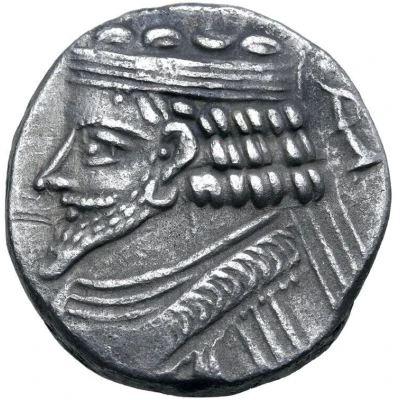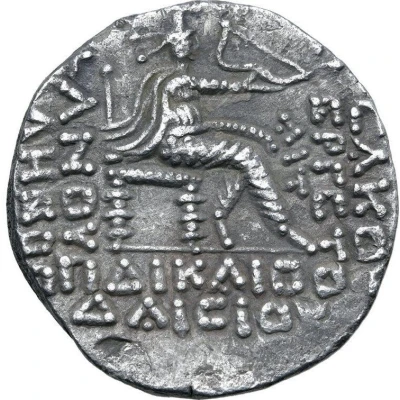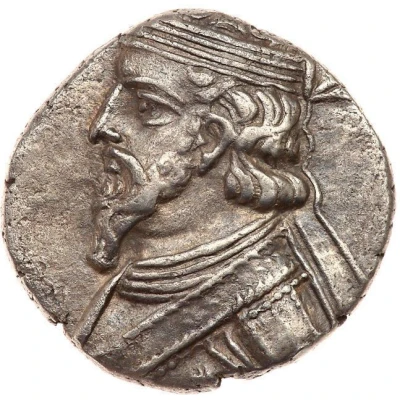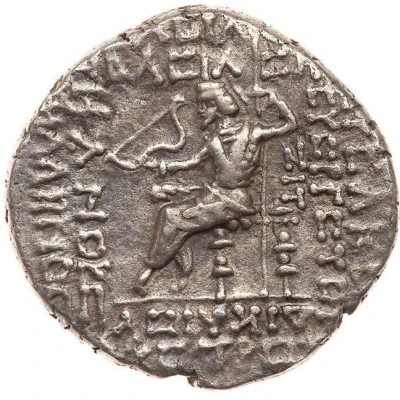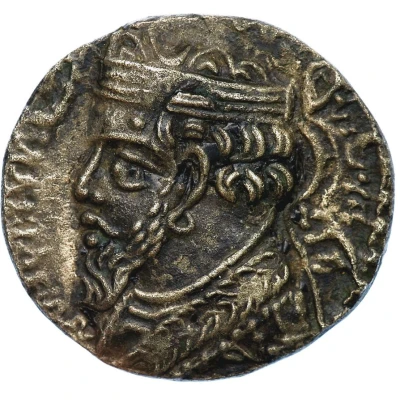
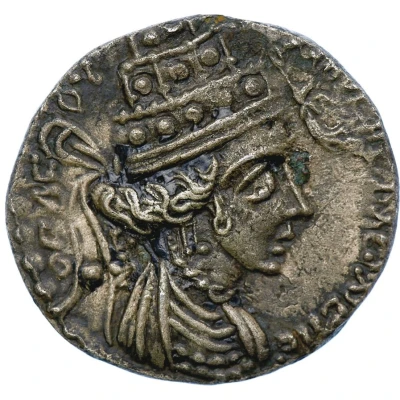

© Ira & Larry Goldberg Auctioneers
Tetradrachm - Phraates V and Musa 312 1 BC
312 (1 BC) year| Silver | 11.11 g | - |
| Issuer | Parthian Empire (Parthian Empire (247 BC - 224 AD)) |
|---|---|
| King | Phraates V (2 BC - 4 AD) |
| Regent | Musa (2 BC - 4 AD) |
| Type | Standard circulation coin |
| Year | 312 (1 BC) |
| Calendar | Seleucid era |
| Value | Tetradrachm (4) |
| Currency | Drachm (247 BC-224 AD) |
| Composition | Silver |
| Weight | 11.11 g |
| Shape | Round (irregular) |
| Technique | Hammered |
| Orientation | Coin alignment ↑↓ |
| Demonetized | Yes |
| Updated | 2024-10-10 |
| Numista | N#379493 |
|---|---|
| Rarity index | 100% |
Reverse
Queen's bust in tiara with double loop right, flying Nike in front, abbreviated month name ?AN (Xandikos, Apr./May AD 1, reading from outside) set in diadem ends, around, four-line inscription, TEAC OYPANIAC MOYCHC BACI?ICHC
Script: Greek
Edge
Plain
Comment
Following the defeat and death of Crassus and his son at the Battle of Carrhae in early May 53 BC, not only the victorious Parthians took the Roman standards, but also captured about 10,000 prisoners. However, around twenty years later and after lengthy negotiations between Phraates IV and Augustus, the Parthian king finally rounded up the surviving Roman prisoners in 20 BC and despatched them to the Roman emperor together with the captured standards. In return, Augustus gifted Phraates with an Italian slave girl, named Musa. Although she initially served as a concubine in the Parthian king's harem, Musa was soon declared queen after giving birth to a son, called Phraataces (the diminutive form of Phraates). However, sometime in 3/2 BC, Musa conspired with her young son and had the reigning king Phraates IV assassinated. She then married Phraataces, following a Magian custom, and began to rule jointly with him. Classical sources relate that Phraataces and Musa lost their crowns in a "civil war" and were subsequently murdered.Interesting fact
One interesting fact about the Tetradrachm coin from the Parthian Empire is that it features a unique blend of Iranian and Hellenistic influences in its design. The coin's obverse side depicts the bust of Phraates V, the Parthian king, while the reverse side features a representation of the goddess Musa, who was revered by the Parthians as a symbol of fertility and prosperity. This fusion of Persian and Greek elements reflects the cultural exchange and syncretism that characterized the Parthian Empire, which was a major power in the ancient Near East for over four centuries.
